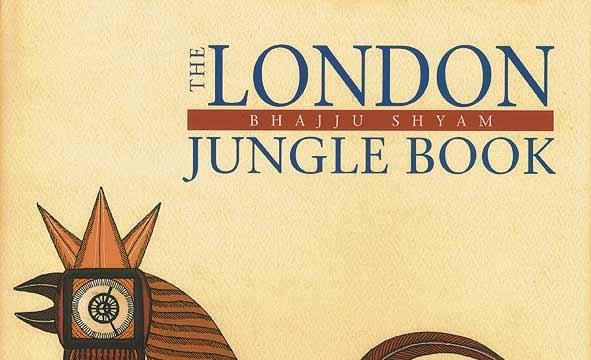In 2002, Bhajju Shyam, a young Gond artist, travelled to London to spend two months painting murals on the walls of an upmarket Indian restaurant in Islington. A year later, he captured the imagination of Gita Wolf and Sirish Rao during an illustrator’s workshop their publishing house, Tara Books, ran. His stories about London—the journey there, the people and their strange customs—suggested to the editors that there was a book here: a book in which Shyam would paint and tell the story of his London Odyssey in an idiom which used the symbols and colours of Gond tribal art. The result, The London Jungle Book (Tara Books/Museum of London; Rs 750), is an extraordinary example of reverse-anthropology. London is transformed into a marvellous bestiary, full of foxes and bats, of four-armed goddesses and worms underground, of fish-women and bird-men.
Loyal Friend Number 30 is a red double-decker bus sporting a dog’s head and a cheerfully curling tail. The number 30 bus became Shyam’s familiar companion on his explorations of this urban terrain: “You could walk the same route,” he says, “but then you might get cold, or lost, or be robbed. But the bus will take care of you, just like the dogs that guide us through the forests near my village.”
What does this traditional artist make of Modern Art? Shyam explains that “a lot of the time I couldn’t understand what the artist was trying to say”. He was inspired by one of Damien Hirst’s ‘dead animal in formaldehyde’ installations—in this case a cow. “We have cows in the middle of the road in India, but not inside galleries…I guessed that maybe he wanted to say something about death. That much was clear.”
There are few books in the world that contain such a happy marriage of image and text. The two or three paragraphs that accompany each image are a beautiful blend of anecdote and explanation. You’re led inside a remarkable mind, introduced to, and charmed by, a unique voice and you come away from the book uplifted by the realisation that even in our commodified, advertising-bombarded, globalised world, there are genuinely different ‘ways of seeing’.




